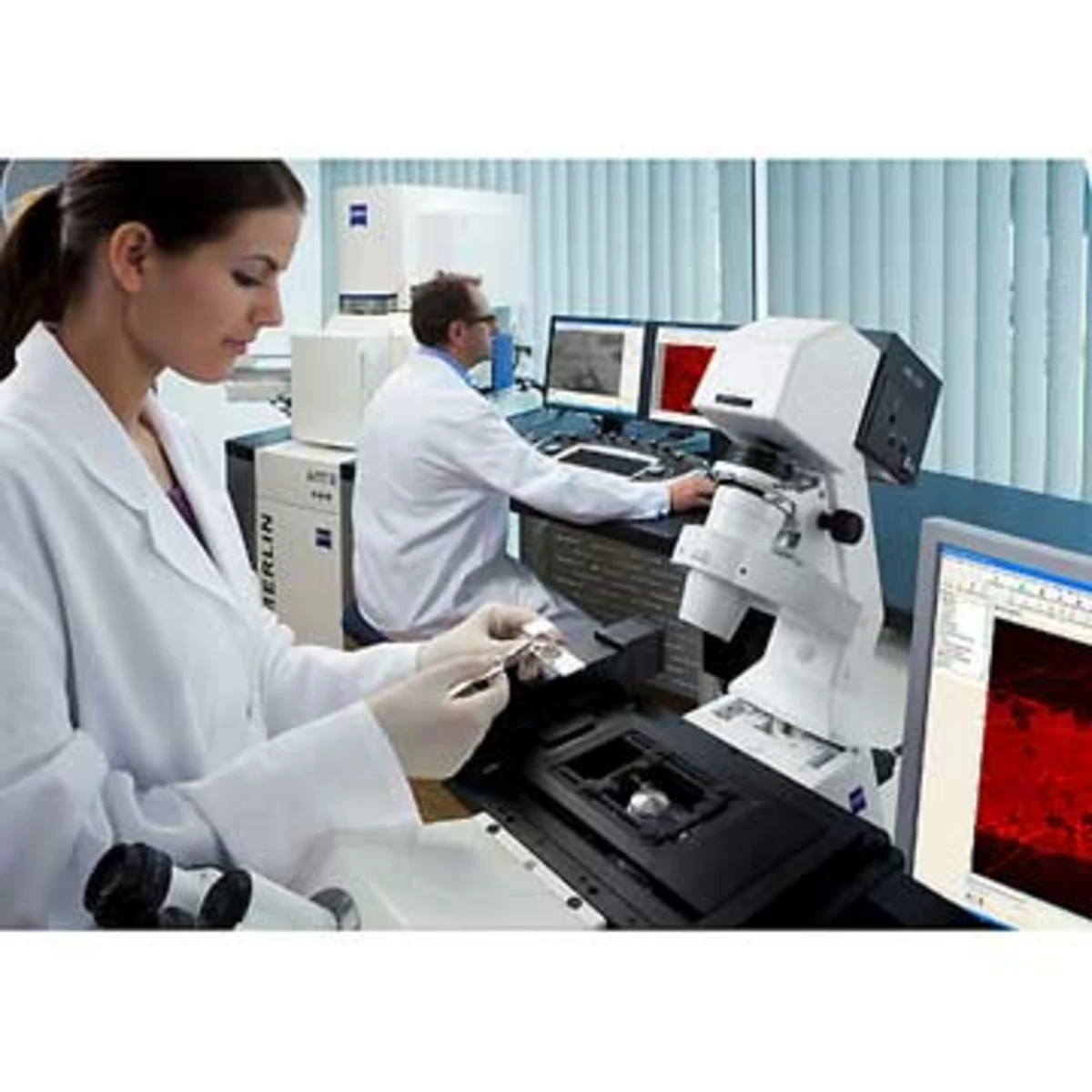Produit
Correlative Microscopy: First Installation at Pilot Customers
Shuttle&Find interface from Carl Zeiss well received
OBERKOCHEN, Germany—November 24, 2009.
Together with several pilot customers, Carl Zeiss has started application development for correlative microscopy in materials analysis and performed the initial installations of the platform Shuttle&Find.
The focus of attention is the analysis of structures (e.g. polished sections), fractures, and particles. The seamless interaction of light and electron microscopes delivers time and cost benefits for all these applications.
In many cases, the planned examinations are only possible at all through an interface for correlative microscopy.
Scientists at the ZHAW Institute of Materials and Process Engineering in Winterthur, Switzerland, for example, have been tasked with describing as precisely as possible the “ausferritic” structure of a bainitic spheroidal graphite cast iron and with analyzing precipitations and material inclusions.
Scientist Christof Scherrer explains : “Particularly with large polished samples with structural components in the micrometer range (high magnifications), correlative microscopy is the only way to relocate the same locations without doubt." Because of its special properties such as tensile strength and wear resistance (hardness), this material is used for gears and the parts of combustion engines, for example.
Presented for the first time at the Microscopy Conference in Graz, Austria, at the beginning of September, the Shuttle&Find interface for correlative microscopy in materials analysis is a joint development of the Light Microscopy, Electron Microscopy and Central Research divisions of Carl Zeiss. “This development was very well received in Graz, and generated many helpful suggestions which have now been implemented," says Project Manager Martin Edelmann.
Shuttle&Find is an easy-to-use interface for the transfer of specimens and images between a light and an electron microscope.
It connects upright and inverted light microscopes of type SteREO Discovery, Axio Imager and Axio Observer featuring a motorized stage with all current ZEISS scanning electron microscopes as well as with the ZEISS CrossBeam workstations (a combination of scanning electron microscope and a focused ion beam for material processing).
The main task of the interface is to relocalize with high precision in the electron microscope the regions of interest marked in the light microscope (and vice versa). It is also possible to overlay the images from the two different systems.
In parallel to the first successful pilot installations, Shuttle&Find will also be commercially available.
Correlative Microscopy
Demandez un devis pour le Correlative Microscopy ou une solution équivalente
Demander un devis
Description
Correlative Microscopy: First Installation at Pilot Customers
Shuttle&Find interface from Carl Zeiss well received
OBERKOCHEN, Germany—November 24, 2009.
Together with several pilot customers, Carl Zeiss has started application development for correlative microscopy in materials analysis and performed the initial installations of the platform Shuttle&Find.
The focus of attention is the analysis of structures (e.g. polished sections), fractures, and particles. The seamless interaction of light and electron microscopes delivers time and cost benefits for all these applications.
In many cases, the planned examinations are only possible at all through an interface for correlative microscopy.
Scientists at the ZHAW Institute of Materials and Process Engineering in Winterthur, Switzerland, for example, have been tasked with describing as precisely as possible the “ausferritic” structure of a bainitic spheroidal graphite cast iron and with analyzing precipitations and material inclusions.
Scientist Christof Scherrer explains : “Particularly with large polished samples with structural components in the micrometer range (high magnifications), correlative microscopy is the only way to relocate the same locations without doubt." Because of its special properties such as tensile strength and wear resistance (hardness), this material is used for gears and the parts of combustion engines, for example.
Presented for the first time at the Microscopy Conference in Graz, Austria, at the beginning of September, the Shuttle&Find interface for correlative microscopy in materials analysis is a joint development of the Light Microscopy, Electron Microscopy and Central Research divisions of Carl Zeiss. “This development was very well received in Graz, and generated many helpful suggestions which have now been implemented," says Project Manager Martin Edelmann.
Shuttle&Find is an easy-to-use interface for the transfer of specimens and images between a light and an electron microscope.
It connects upright and inverted light microscopes of type SteREO Discovery, Axio Imager and Axio Observer featuring a motorized stage with all current ZEISS scanning electron microscopes as well as with the ZEISS CrossBeam workstations (a combination of scanning electron microscope and a focused ion beam for material processing).
The main task of the interface is to relocalize with high precision in the electron microscope the regions of interest marked in the light microscope (and vice versa). It is also possible to overlay the images from the two different systems.
In parallel to the first successful pilot installations, Shuttle&Find will also be commercially available.
Ce produit a été créé et référencé pour le bon fonctionnement de la plateforme
